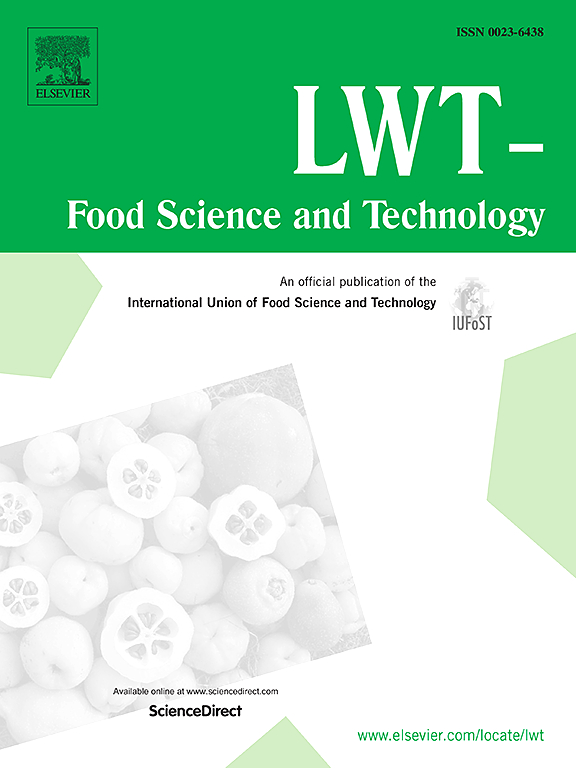Comparative nutritional and physicochemical analysis of plant-based walnut yogurt and commercially available animal yogurt
IF 6
1区 农林科学
Q1 FOOD SCIENCE & TECHNOLOGY
引用次数: 0
Abstract
This study aims to investigate better alternatives to animal milk sources for yogurt production. Walnut yogurt was produced by fermentation with Lactiplantibacillus plantarum, a member of the genus Lactobacillus. Its nutritional value and physicochemical properties were analyzed and compared with those of animal yogurts. The results showed that: compared to walnut milk, fermentation resulted in an increase in the content of organic acids (2260.00 mg/kg), total phenolic content (19.23 μg/ml) and DPPH free radical scavenging activity (94.61%) of walnut yogurt. In addition, the content of bitter amino acids in walnut yogurt was reduced by 92% and the flavor quality and antioxidant activity were improved. The content of protein (5.67 g/100g), fat (54.85 g/100g), total solids (19.40 g/100g), total free amino acids (441.39 μg/mL) and bioactivity of walnut yogurt were higher than those of commercially available animal yogurt. Walnut yogurt was found to be acceptable by sensory evaluation. Overall, walnut yogurt had different physicochemical properties (such as total solids content) and higher nutritional value (including antioxidant activity) compared to animal yogurt. This study highlights the differences and advantages between plant-based yogurt and animal-based yogurt, and provides a scientific basis for further optimizing the formula and production process of plant-based yogurt.
植物核桃酸奶与市售动物酸奶的营养和理化分析比较
本研究旨在研究生产酸奶的动物奶源的更好替代品。核桃酸奶是通过植物乳杆菌发酵生产的。对其营养价值和理化特性进行了分析,并与动物酸奶进行了比较。结果表明:与核桃乳相比,发酵导致核桃酸奶的有机酸含量(2260.00 mg/kg)、总酚含量(19.23 μg/ml)和 DPPH 自由基清除活性(94.61%)增加。此外,核桃酸奶中苦味氨基酸的含量降低了 92%,风味质量和抗氧化活性也得到了改善。核桃酸奶的蛋白质含量(5.67 克/100 克)、脂肪含量(54.85 克/100 克)、总固形物含量(19.40 克/100 克)、总游离氨基酸含量(441.39 微克/毫升)和生物活性均高于市售动物酸奶。感官评估发现核桃酸奶是可接受的。总体而言,与动物酸奶相比,核桃酸奶具有不同的理化特性(如总固形物含量)和更高的营养价值(包括抗氧化活性)。这项研究强调了植物酸奶与动物酸奶的差异和优势,为进一步优化植物酸奶的配方和生产工艺提供了科学依据。
本文章由计算机程序翻译,如有差异,请以英文原文为准。
求助全文
约1分钟内获得全文
求助全文
来源期刊

LWT - Food Science and Technology
工程技术-食品科技
CiteScore
11.80
自引率
6.70%
发文量
1724
审稿时长
65 days
期刊介绍:
LWT - Food Science and Technology is an international journal that publishes innovative papers in the fields of food chemistry, biochemistry, microbiology, technology and nutrition. The work described should be innovative either in the approach or in the methods used. The significance of the results either for the science community or for the food industry must also be specified. Contributions written in English are welcomed in the form of review articles, short reviews, research papers, and research notes. Papers featuring animal trials and cell cultures are outside the scope of the journal and will not be considered for publication.
 求助内容:
求助内容: 应助结果提醒方式:
应助结果提醒方式:


